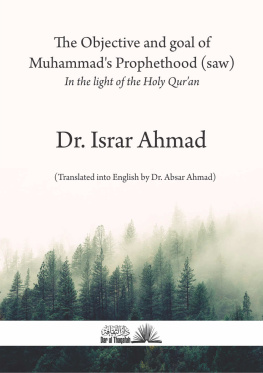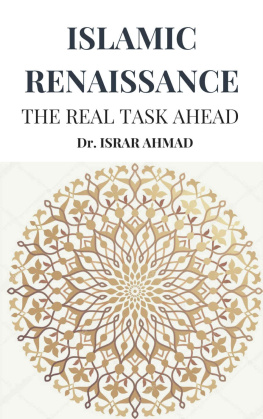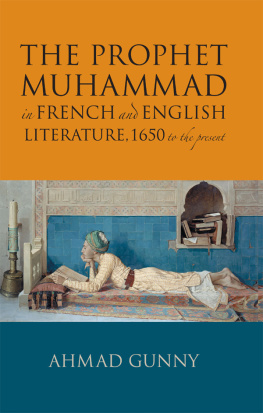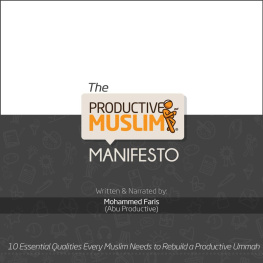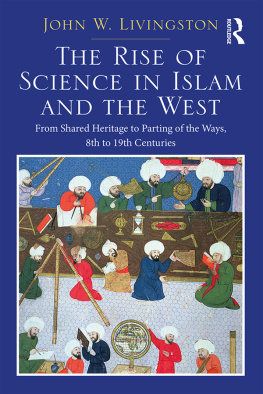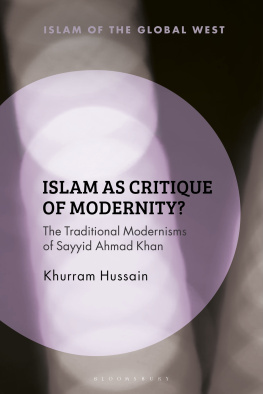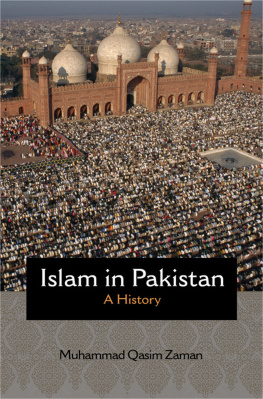Dr. Israr Ahmad
Dr. Sanaullah Ansari
Abdullah bin Amar al-Aas reported Allahs Messenger, Muhammad (peace and blessings of Allah be upon him), as saying:
My people (Ummah) will undergo and experience all those conditions which were suffered by the Children of Israel in a Manner of resemblance in which a shoe of a pair resembles the other shoe.
Introduction
The substance of the present tract draws mainly from a long article published by Dr. Israr Ahmed under the same title in the October/November 1974 issue of Meesaq magazine. It was later included in a booklet entitled Sar- Afgandem which comprises, among other things, the contents of a marathon speech delivered at the end of 21- days long Quranic study camp held at Lahore in September 1974, in which Dr. Israr Ahmed publicly announced the formation of Tanzeem-e-Islami a well- disciplined religious group to work for the propagation and revival of Islam in its totality.
Histories of the Jews and the Muslims, being typically woven around divine revelation, provide a scholar ground for a thoughtful and perceptive comparative study of them. Though in the present day political climate, Jews and Muslims form two totally divergent people, yet striking similarities in their temporal histories are found and pointed out. In particular there is a strong parallelism regarding the two phases of rise and decline experienced by the two religious fraternities during the long course of their histories thus proving literally a tradition of the Holy Prophet Muhammad (peace be upon him) on this subject reproduced elsewhere in this monograph.
The view of history in the Muslim mind is, and should be, a prophetic one. In the Quran over and over again the historic sequence is repeated a warning, followed by either repentance or destruction, as God sends His messenger to one nation after another. The Quran provides a basis for the moral interpretation of history The course of history is a moral agency through which the morally superior elements rise to the top, while those who are morally inferior sink to the bottom. That virtuous living, which is the outcome of a healthy religious faith, must inevitably lead to success .
This interpretation is deeper and broader than that of Karl Max because it covers both the moral and material aspects, while that of Marx concentrates entirely on the material aspect, being greatly influenced by the materialistic evolutionary philosophies of his time. Religion is not opium for the people. The impulse towards social emancipation is surely found in Islam. It always aimed at a society where equality, justice and prosperity would prevail. Islam teaches that God is concerned not only with moral and spiritual life of man but also with total social emancipation and betterment of economic conditions. The Holy Prophet (peace be upon him) left for us not only a theory that is preached, but concrete experience and historical facts.
Dr. Israr Ahmeds analysis presented here avoids the so- called cool and uncommitted academicism typical of modern writers of Islamic themes. It cannot be squared with an anti-activist or spectator view of Islam and Islamic literature that aims merely at an enlargement of the understanding. Indeed here it becomes an essentially practical subject of vital importance: it seeks to get Muslims to do things. He firmly believes that if history is read backwards, it is lived forwards. Dr. Israr Ahmed has a clear and well-defined view of the future imperative regarding the revival and resurgence of Islam. Moreover, he himself sounds an optimistic note in the beginning of this monograph about a world embracing movement towards Islamic renaissance. Islams inner capacity for renewal has more than once surprised both friends and foes. It has at various times raised up reformers to rekindle the light of faith when it had grown dim. It has better chance than any other faith or ideology of holding and extending its power over the hearts and wills of men, as there is a fresh search for reality, especially among the young and the highly educated.
One thing that becomes clear from a perusal of this tract is that the warp and wool of the authors entire thinking is made up with Quranic concepts. The very categories of his thinking are those of the Holy Quran and the prophetic traditions. He does not quote from the Holy Book just to prove his point or buttress his argument. The Quran, for him, is meant to inspire and we must look to it for the stimulus to spiritual experience and historical understanding. It is only through practice and experience and not through clever interpretation that we can give it genuine significance. The spontaneity and facility with which he quotes the Quranic verses amply shows that the teachings of the Divine Book permeate his thinking and imagination thoroughly.
Dr. Sanaullah Ansari took great pains to translate this monograph from Urdu into English. Later, a number of amendments in linguistic style and syntax were made at various places in the first draft. We do hope that he would find it much improved in the present form. The Anjuman Khuddam-ul-Quran is highly indebted to him for this valuable help.
Dr. Absar Ahmed
Director (English Deptt.) Quran Academy, Lahore
The Two periods of the Rise and Decline of the Muslim Ummah
In the Name of Allah, Most Gracious, Most Merciful.
The Twentieth century of the Christian era, according to our analysis, presents a decisive turning point in the history of the Muslim Ummah (community). At the end of the first quarter of the century the state of the Muslim world had taken a definite turn, and there were some signs of resuscitation in the moribund body of the Muslim Ummah.
If we look at it closely, the middle half of this century presents an astounding picture. On one hand, the process of decline and deterioration reached its lowest ebb in the events of 1967 and 1971. On the other hand, there was also a widespread movement towards revival and the beginning of a process of renewal. It commenced during the years 1920-1925. For the past fifty years these concurrent trends of degeneration and revival continued side by side almost in the manner depicted in the Quran.
He has let free the two bodies of flowing water, meeting together. Between them is a barrier which they do not transgress. [TMQ Al-Quran 55 : 19-20]
In order to elaborate this general view, we will first present a chronological sketch of the rise and decline of the Muslim Ummah. In fact, an understanding of our present situation demands that the past glory and grandeur of the Muslim Ummah should be realised by young Muslims. They should know that there was a time when the armies of the Arabs starting from Gibraltar had reached north-east into the heart of France. At another time the Turkish armies, after trampling all of Eastern Europe, were knocking at the gates of Vienna. Perhaps in this way we can recreate in the hearts of our young men a desire to revive the past majesty and glory of the Muslim civilisation.
It should also become clear from this that the decline of this superb culture was due to the justice of Almighty Allah (swt), which is above all human considerations, as His laws are abiding and immutable. The way He dealt with the previous community of faith in His revelation i.e., the Jews was repeated in His dealings with us. Our history and their history are to a remarkable extent analogous. Two periods of severe chastisement were borne by the Jews, and we have also passed through two periods of chastisement. Although, because of the vastness of the Ummah of Muhammad (saw) our periods of deterioration and degradation were much longer than those of the Jews. During the period of Jewish control, Jerusalem was devastated twice, and during the period of our control the sanctity of al-Aqsa Mosque was also violated twice.



